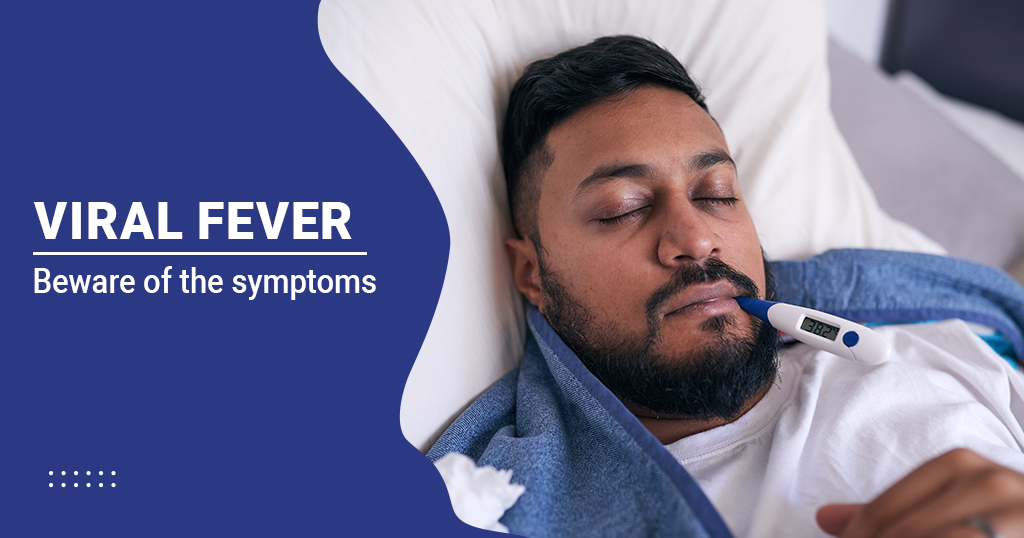Understanding Viral Fever Symptoms: A Comprehensive Guide
In this article, we will provide you with a detailed and comprehensive guide on viral fever symptoms. We aim to help you understand the signs and symptoms associated with viral fevers and empower you with the knowledge to identify and manage them effectively.
What is Viral Fever?
Viral fever, also known as viral infection or viral illness, refers to a wide range of infections caused by viruses. These infections can affect various parts of the body, including the respiratory system, gastrointestinal tract, and more. Viral fevers are highly contagious and can spread easily from person to person.
Common Viral Fever Symptoms
It is important to be aware of the common symptoms associated with viral fevers to seek timely medical attention and prevent the spread of the infection. Here are some of the most prevalent viral fever symptoms:
Fever: One of the primary symptoms of viral fever is an elevated body temperature. It is usually accompanied by chills and sweating.
Headache: Many individuals experience headaches during viral infections. The intensity and duration of the headache may vary.
Fatigue: Feeling tired and experiencing a lack of energy is a common symptom of viral fevers.
Cough and Sore Throat: Respiratory viral infections often lead to a persistent cough and a sore throat.
Runny or Stuffy Nose: Nasal congestion, sneezing, and a runny nose are frequently observed in viral fever cases.
Body Aches: Muscle and joint pain are common symptoms associated with viral infections.
Nausea and Vomiting: Gastrointestinal viral infections can cause nausea, vomiting, and diarrhea.
Less Common Viral Fever Symptoms
In addition to the common symptoms mentioned above, viral fevers can sometimes present less common symptoms. These may include:
Rash: Certain viral infections can cause skin rashes or redness.
Swollen Lymph Nodes: In some cases, viral fevers may lead to swollen lymph nodes, particularly in the neck and armpits.
Eye Redness: Viral conjunctivitis, commonly known as pink eye, can cause redness and irritation in the eyes.
Abdominal Pain: Some viral infections may cause abdominal pain or discomfort.
Difficulty Breathing: Severe respiratory viral infections can result in difficulty breathing, especially in vulnerable individuals.
When to Seek Medical Attention
While most viral fevers resolve on their own with rest and home care, it is crucial to know when to seek medical attention. Consult a healthcare professional if:
The fever persists for more than three days.
The symptoms worsen or become severe.
There is difficulty breathing or chest pain.
There are signs of dehydration, such as decreased urination or extreme thirst.
There is persistent vomiting or inability to keep fluids down.
There are signs of a secondary infection, such as a bacterial infection.
Preventing the Spread of Viral Fevers
To minimize the risk of viral fevers and prevent their transmission, it is essential to follow these preventive measures:
Wash your hands frequently with soap and water for at least 20 seconds.
Avoid close contact with individuals who have viral infections.
Cover your mouth and nose with a tissue or your elbow when coughing or sneezing.
Stay home if you are feeling unwell to prevent spreading the infection to others.
Keep your surroundings clean and disinfect frequently touched surfaces regularly.

In conclusion, viral fevers are common infections caused by various viruses. Recognizing the symptoms associated with viral fevers is crucial for timely medical intervention and preventing the spread of the infection. If you experience persistent or severe symptoms, it is advisable to consult a healthcare professional for an accurate diagnosis and appropriate treatment. By practicing good hygiene and taking necessary precautions, we can collectively reduce the risk of viral fevers in our communities.
Frequently Asked Questions about Viral Fever Symptoms
1. What is viral fever?
Viral fever is a common term used to describe a fever caused by a viral infection.
2. What are the common symptoms of viral fever?
The common symptoms of viral fever include high body temperature, headache, body aches, fatigue, sore throat, cough, and nasal congestion.
3. How long does viral fever usually last?
The duration of viral fever can vary, but it typically lasts for about 3 to 7 days.
4. Can viral fever be accompanied by a rash?
Yes, some viral infections can cause a rash along with fever. It is important to consult a healthcare professional for proper diagnosis and treatment.
5. Is viral fever contagious?
Yes, viral fever can be contagious. It can spread from person to person through close contact, respiratory droplets, or contaminated surfaces.
6. How can I relieve the symptoms of viral fever?
You can relieve the symptoms of viral fever by getting plenty of rest, staying hydrated, taking over-the-counter fever reducers, and using warm compresses to alleviate body aches.
7. When should I seek medical attention for viral fever?
You should seek medical attention if the fever persists for more than a few days, is accompanied by severe symptoms, or if you have any concerns about your health.
8. Can viral fever lead to complications?
In some cases, viral fever can lead to complications such as dehydration, pneumonia, or other secondary infections. Seeking medical care is important to prevent and manage any potential complications.
9. Are there any specific tests to diagnose viral fever?
There are specific tests, such as blood tests or viral cultures, that can help diagnose viral fever. Your healthcare provider will determine the appropriate tests based on your symptoms and medical history.
10. How can I prevent viral fever?
You can prevent viral fever by practicing good hygiene, such as washing your hands frequently, avoiding close contact with sick individuals, and getting vaccinated against specific viral infections if available.




